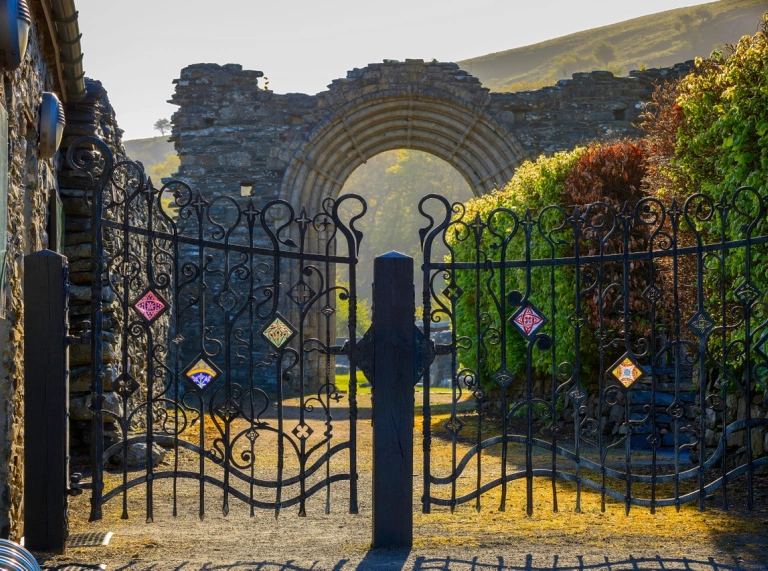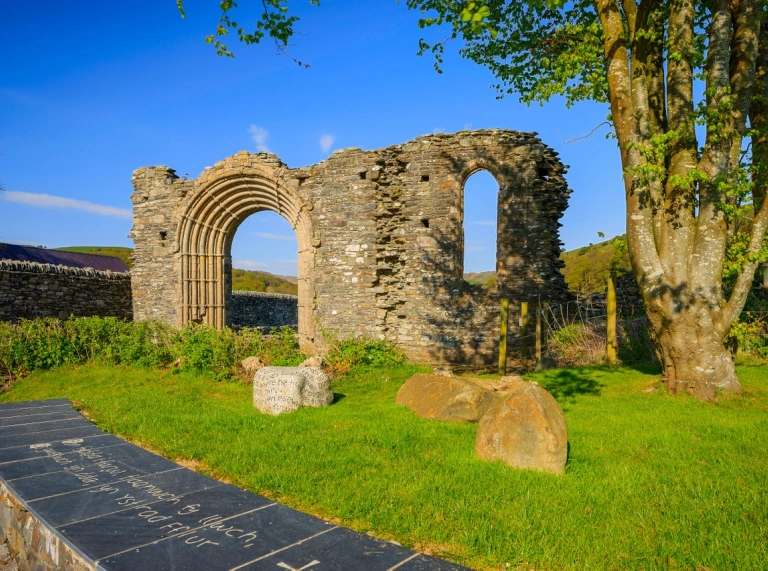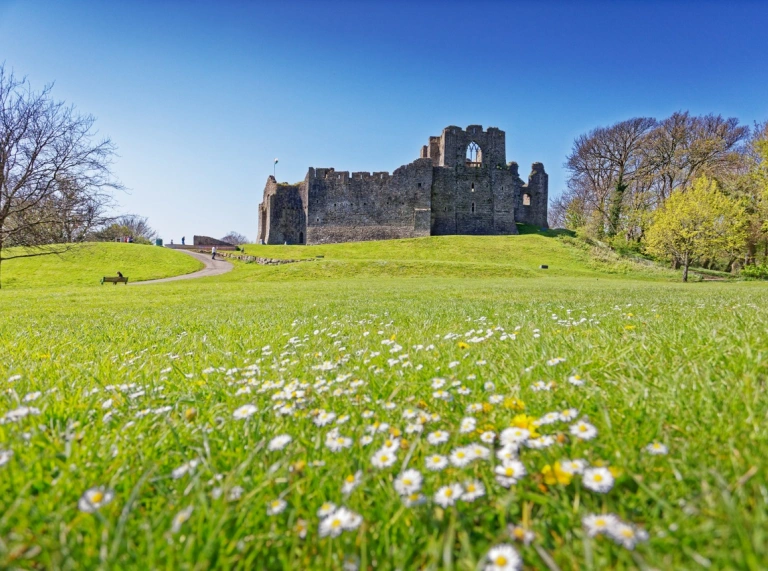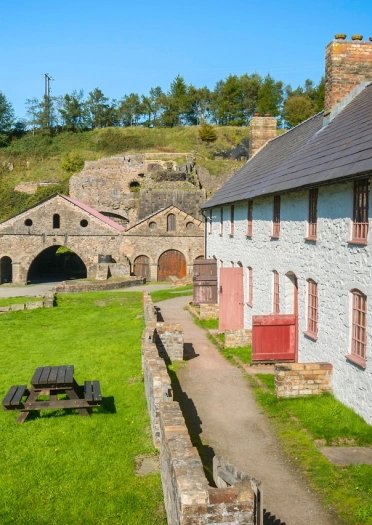Kidwelly Castle, Carmarthenshire
Relatively unknown and with a name which sounds more Irish than Welsh, Kidwelly is nonetheless a splendid castle. Much of the structure remains intact. Sturdily built in local stone in the 13th and 14th centuries, on the site of a Norman fort, its walls and towers glower over a quiet river valley.


Strata Florida Abbey, Ceredigion
The last remaining fragments of Strata Florida Cistercian monastery, including a detailed stone arch and the feet of mighty pillars, hint at its former glories. It stood at the heart of a wealthy estate where the monks farmed and welcomed pilgrims and traders. The medieval poet Dafydd ap Gwilym is buried here, under a yew tree.


Cyfarthfa Castle Museum & Art Gallery, Merthyr Tydfil
Cyfarthfa Castle is a 19th century stately home, built in the shape of a castle, complete with towers and crenellations. Originally the home of wealthy ironworks owner William Crawshay, it’s now a museum of local history. On display are Laura Ashley dresses, the first steam whistle and a fine collection of porcelain.

The Copper Kingdom Centre, Amlwch
The Copper Kingdom Centre tells the story of Anglesey’s former role as the world’s leading copper producer. You can get the lowdown through interactive displays and activities. In 2013, it was shortlisted for a Guardian Museum and Heritage Award for the UK’s most inspiring museum or heritage visitor attraction.

Oystermouth Castle, Swansea
This small, Norman stone castle has a romantic air. Oystermouth Castle gazes out over Swansea Bay from Mumbles. Recent conservation work has revealed new details, including graffiti art from the 14th century. Locals visit the grassy grounds to enjoy picnics, alfresco plays, concerts, carol singing and other seasonal happenings.


Caerphilly Castle
Like a sleeping giant awaiting a call to arms, Caerphilly Castle is absolutely massive. In area, it’s the largest castle in Wales. It has everything a castle should have – chunky stone walls, turrets, a moat with a drawbridge and a tower that has looked ready to tumble for centuries.



Pontcysyllte Aqueduct
Built in 1805 the Pontcysyllte Aqueduct towers 30 metres (100 feet) above the River Dee, and was named a World Heritage Site in 2009. There are so many ways to enjoy the area, including a horse-drawn boat trip along the canal wharf in Llangollen.


The Blaenavon World Heritage Site
The South Wales town of Blaenavon is a UNESCO World Heritage Site. From the 18th to the 20th centuries, it was a powerhouse of coal mining and iron production. You can get a feel for the past at the Big Pit National Coal Museum and Blaenavon Ironworks, explore the restored town and ride the Blaenavon Heritage Railway.



The Six Bells Miners Memorial
Sebastien Boyesen’s remarkable Six Bells Miners Memorial is a 20m steel sculpture of a miner, created in 2010 to commemorate the 1960 Six Bells mining disaster, in which 45 men lost their lives. With palms held out like a guardian angel, it has a semi-transparent quality. It’s made from over 20,000 strips of steel, painstakingly welded together.
The Castles and Town Walls of King Edward
Head to North Wales to follow a trail of majestic castles - a group of which have been described as the finest examples of military architecture of their kind in Europe. Beaumaris, Conwy, Caernarfon and Harlech castles, along with the fortifications surrounding the towns of Conwy and Caernarfon, have been collectively declared a UNESCO World Heritage Site as the Castles and Town Walls of King Edward.





